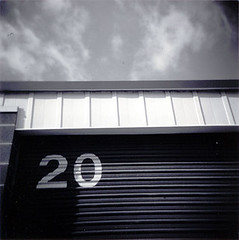Daiva Markelis, White Field, Black Sheep: A Lithuanian-American Life. University of Chicago Press, 2010.
*
Her parents never really explained what a D.P. was. Years later Daiva Markelis learned that “displaced person” was the designation bestowed upon European refugees like her mom and dad who fled communist Lithuania after the war. Growing up in the Chicago suburb of Cicero, though, Markelis had only heard the name T.P., since her folks pronounced the D as a T: “In first grade we had learned about the Plains Indians, who had lived in tent-like dwellings made of wood and buffalo skin called teepees. In my childish confusion, I thought that perhaps my parents weren’t Lithuanian at all, but Cherokee. I went around telling people that I was the child of teepees.” So begins this touching and affectionate memoir about growing up as a daughter of Lithuanian immigrants.
Markelis was raised during the 1960s and 1970s in a household where Lithuanian was the first language and where Lithuanian holidays were celebrated in traditional dress. White Field, Black Sheep derives much of its charm from this collision of old world and new: a tough but cultured generation that can’t quite understand the ways of America and a younger one weaned on Barbie dolls and The Brady Bunch, Hostess cupcakes and comic books, The Monkees and Captain Kangaroo. Throughout, Markelis recalls the amusing contortions of language and identity that underscored her childhood. She also humorously recollects the touchstones of her youth, from her First Communion to her first game of Twister. Ultimately, she revisits the troubles that surfaced in the wake of her assimilation into American culture: the constricting expectations of her family and community, her problems with alcoholism and depression, and her sometimes contentious but always loving relationship with her mother.
Deftly recreating the emotional world of adolescence, but overlaying it with the hard-won understanding of adulthood, White Field, Black Sheep is a poignant and moving memoir—a lively tale of this Lithuanian-American life.
Daiva Markelis is professor of English at Eastern Illinois University. Her writings have appeared before in the Chicago Tribune Magazine, Chicago Reader, and American Literary Review, among others.
Julija Šukys: Talk a little about how the writing this book. I, for one, heard you read a piece of it at a conference several years ago. How long did it take to write? What was your process? Did you write in fits and starts? Do you rewrite? How much input from others do you take in along the way?
Daiva Markelis: Seven years ago my mother died. Although she was almost eighty-five and had lived a long and interesting life, I mourned her loss deeply. I’d been writing essays and stories for years about growing up Lithuanian-American in Cicero, Illinois. I decided to take the material and add sections about my mother’s life and the year before her death. The process was quite therapeutic.
I wouldn’t say I write in fits and starts, but I do rearrange material quite a bit. Since I’m not very good at straight narrative, I like to organize sections in a mosaic-like way until a broader picture emerges. I rewrite a lot. I belong to a writing group of several university women who write fiction, memoir, and poetry. The group was instrumental in giving feedback as to what worked and what didn’t, especially in terms of structure. White Field would have been a very different book without their suggestions.
Your parents, both now deceased, are central to this memoir. How did their passing help or hinder the writing? Many writers wait until loved ones are gone to write about them (for fear of hurting the living, I suppose). Was this a factor in your case?
Good question. My mother was a big supporter of my writing—the book is dedicated to her memory. I suppose I still would have written the book if she had lived longer since she was a very open-minded woman with a good sense of humour. She would have enjoyed the book, I think, and would have been helpful in suggesting additions and revisions. My father was a writer himself; he wrote short stories and essays in Lithuanian, sometimes about quite sensitive topics. He was a complicated, interesting man who would have understood the importance of writing honestly and bravely, but I don’t know if he would have necessarily liked to read some of the things I wrote about him.
Another central figure in your book is the ‘character’ of Arvid Žygas (who later becomes Father Arvid Žygas, and eventually grows to be an influential figure in the Lithuanian community). Your descriptions of him are funny and poignant: this oddball, mischievous adolescent develops into a warm and caring adult, who remained one of your dearest friends. Recently, we all learned of his sudden death. This happened before I read your book, so as I read, I couldn’t help thinking how you had managed, without realizing, to build him a monument. And, in a way, it’s a more beautiful monument than perhaps you could make now, because it was built out of love and laughter rather than sorrow. Can you talk a bit about the death of your friend and if your book has taken on a new significance for you in light of his passing?
Arvid was a very good friend and an amazing person. The last time I talked to him was in August of 2010. It was a two-hour conversation—you couldn’t have just a chat with Arvid. He told me he was very worried about his health. Doctors had detected a brain tumor and were going to remove it. But even in the midst of this depressing talk, Arvid found a way to be both humorous and thought-provoking. He was afraid that doctors would take out the section of the brain that regulated empathy, and that he would become some kind of a moral monster. He called back a week later to say that he was going to be okay. Then I heard from friends in January that he was very sick and didn’t want people calling or contacting him. During that conversation in August he’d mentioned that he didn’t want to worry people or take up their time. I was greatly saddened and surprised by his death. I’m trying to write about it, but, you’re right, it’s a different experience, much harder and, of course, not really pleasurable. I’m glad I had the chance to write about the Arvid I knew as a girl and young woman without the spectre of his death hanging over me. Continue reading “CNF Conversations: Daiva Markelis”





